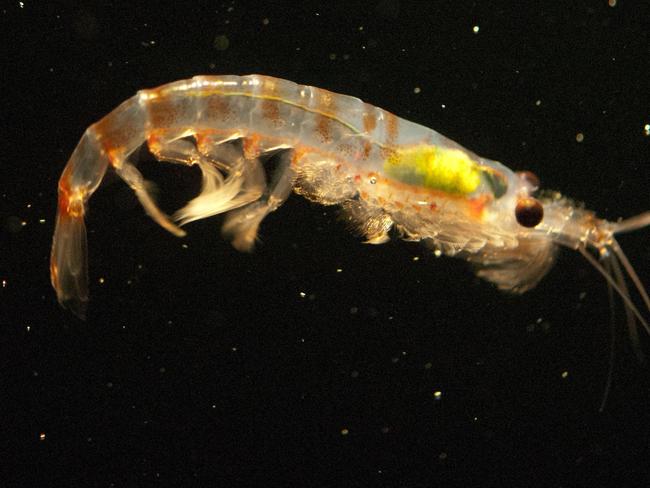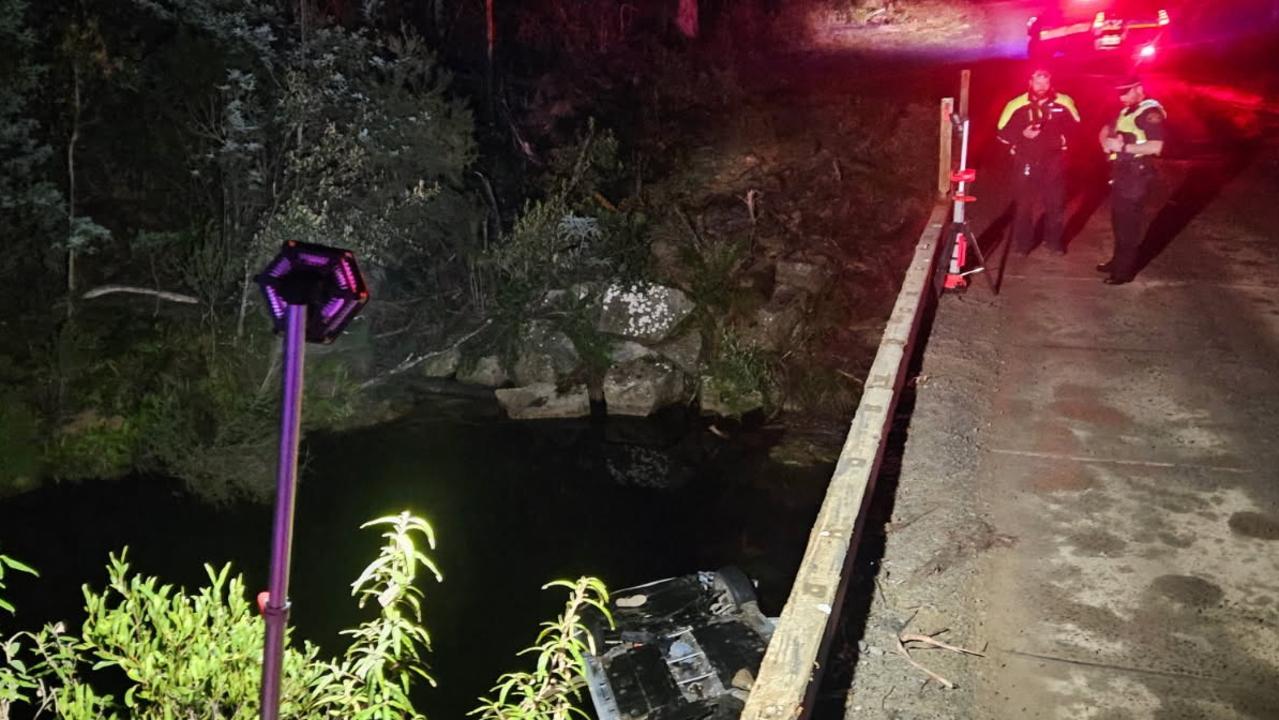Antarctic Treaty system signed on December 1, 1959 at the height of the Cold War
On the 60th anniversary of the Antarctic Treaty, a game is being played with high stakes and potentially catastrophic consequences.

Tasmania
Don't miss out on the headlines from Tasmania. Followed categories will be added to My News.
In a ground-floor research facility at the Australian Antarctic Division, a sprawling space station-like institution on Hobart’s southern fringe, scientists are studying Antarctic krill in an aquarium chilled to 0.5C. Researchers in the natural sciences do this sort of thing all the time: they observe creatures, big and small, to understand their biology and their behaviour. But this is no ordinary study.
Marine biologist Rob King, a beanpole just shy of 2m tall whose boyish features sit a little incongruously with his balding pate, is measuring the conditions under which krill, Antarctica’s biological fuel, struggle to reproduce. These tiny translucent crustaceans, which in adulthood congregate in vast swarms of a snackable size for blue whales, are the staple on which the Antarctic ecosystem relies. Fish, penguins and sea birds also depend on this plentiful food source. At the point where krill cease to reproduce, the marine and bird life in the Southern Ocean, and much life in the oceans beyond, simply dies.

The Australian writes that Antarctic Treaty that governs the increasingly tenuous balance of power in the white continent, signed by Australia and 11 other countries at the height of the Cold War, turns 60 on Sunday. With the anniversary approaching there have been geopolitical pressures on the treaty, and the uncertain fate of Antarctica itself. King, a scientist, has no opinion on the former but he does hold grave fears for the polar ecosystem.
“If we do nothing about carbon dioxide emissions by the end of the century the hatch rates of krill in some areas of the Southern Ocean will likely drop to 50 per cent of what they are now,” he explains. “By the year 2300, on current trends, we’d expect to see the hatch rate fall to 2 per cent.”
Adding to krill’s list of predators are countries such as Russia, China and Norway, which see it as an important source of feed for farmed salmon, fish oil and bait. China is by far the most krill-hungry nation fishing in Antarctica, with eight 5000 to 7000-tonne factory freezer trawlers and plans for more.

Secret life of krill
I visit King on an uncharacteristically warm spring afternoon in Tasmania’s capital, on the same day a key global body dedicated to the protection of Antarctic animal life is wrapping up its annual meeting in a fine sandstone building in central Hobart crowned, rather appropriately, with battlements. About the time King is explaining the secret life of Antarctic krill and their sensitivity to spikes in ocean temperature and acidity, delegates to the Commission for the Conservation of Antarctic Marine Living Resources — a 26-member global body that meets annually in Hobart and makes decisions consensually — is coming to terms with the dispiriting failure of its 38th meeting. It later emerges that the delegates have failed to agree on all the major proposals put to the meeting, including a non-binding statement on climate change.
King’s boss, Antarctic Division head Kim Ellis, is well aware of the power play that scuppered CCAMLR. Russia and China have joined forces to block a proposed one million square kilometre marine sanctuary in the East Antarctic that has the backing of Environment Minister Sussan Ley, and Ellis himself. It was to have joined two existing marine parks, the most important of which, in the Ross Sea, came into force in 2017. Advocates for the East Antarctic marine sanctuary envisage a complimentary chain of protection zones in the Weddell Sea and the Antarctic Peninsula.
Ellis’s spacious office has a standing desk on which two computer monitors are mounted, giving him the appearance of a captain steering a ship remotely — which is not far from the truth. From this office Ellis administers the Australian Antarctic Territory, a 5,896,500sq km piece of frigid real estate lying almost 5000km due south taking up most of the continent’s east. On this territory Australia maintains three permanent year-round stations — Davis, Casey and Mawson –— and one large summer-only runway at Wilkins Aerodrome. A new all-weather runway near Davis Station is planned, subject to environment approvals, and a new $1.5bn icebreaker will come into service next year to provision the Australian Antarctic project. At the same time successive Australian governments have aided and abetted a dramatic escalation of the Chinese Antarctic presence, most of it on territory claimed by Australia. And there lies a problem.
Marine park politics
The East Antarctic marine sanctuary proposal holds a special place in Ellis’s affections. Asked to list his core goals Ellis, who saw 24 years of service in the army and has been in the AAD role since February, names as his No 1 priority a “network of marine protected areas in East Antarctica — a system that provides protection and sanctuary for marine living resources. We’ve got a lot of work to do on that. There’s resistance and there are challenges.” Ellis refuses to be drawn on the likely reasons for Russian and Chinese resistance to precisely the kind of measure CCAMLR, founded on a convention to protect Antarctic marine life, was designed to champion. “The less generous would describe it as a deliberate attempt by some nations to prevent these things happening,” he says. “My personal view is there’s some merit in that. But equally, nations when working together often disagree for reasons that aren’t particularly transparent. There are bigger geopolitical calculations at play.”
MORE OF TODAY’S NEWS: FAMILY REVEALS ‘PROFOUND SADNESS’ AFTER ALLEGED MURDER
This is something of an understatement. As it approaches the 60th anniversary of the treaty struck at the height of the Cold War to govern Antarctica, the frozen continent is mired in geopolitical manoeuvring. Ellis describes it as a “physical jockeying” for influence. The Antarctic game is being played with high stakes and potentially catastrophic consequences for Antarctica — and global stability. The Antarctic Treaty system, signed on December 1, 1959, manages a continent owned by no country, claimed by many and coveted by many more. The treaty forbids military activity and mineral exploration, though both are permitted in support of science, and declares that Antarctica shall be used solely for “peaceful purposes”.
SUBSCRIBE TO THE MERCURY FOR $5 A MONTH
Twenty-nine years from now, in 2048, the treaty’s environmental protocol and its mining ban might come up for review, and in the lead-up any of the treaty’s consultative countries — those with voting rights — can request a review and propose changes. A special conference would be the first step, but a change to the protocol would be a big leap.. About 420 million years ago in the time of the Gondwana supercontinent the coast of East Antarctica was wedged into the Great Australian Bight. “Whatever we’ve got, Antarctica’s got,” a senior Antarctic analyst told me. And whatever that is, the pressure to mine it may become irresistible at precisely the time that climate change makes mineral exploitation in Antarctica more feasible.
The same analyst, who declined to be named, sees a grim portent for future Antarctic governance in Chinese and Russian manoeuvring at this year’s CCAMLR meeting. He views their joint defeat of the East Antarctic marine protected area, though not unexpected, as a “pivotal” moment that ought to galvanise the international community to action. “We need to react. We can’t just sit back and let it continue. It’s an ‘eyes wide open’ moment. It’s time for Australia and countries of like mind to call this behaviour out, to engage with Russia and China, and try to move those countries.” ...
READ MORE AT theaustralian.com.au


